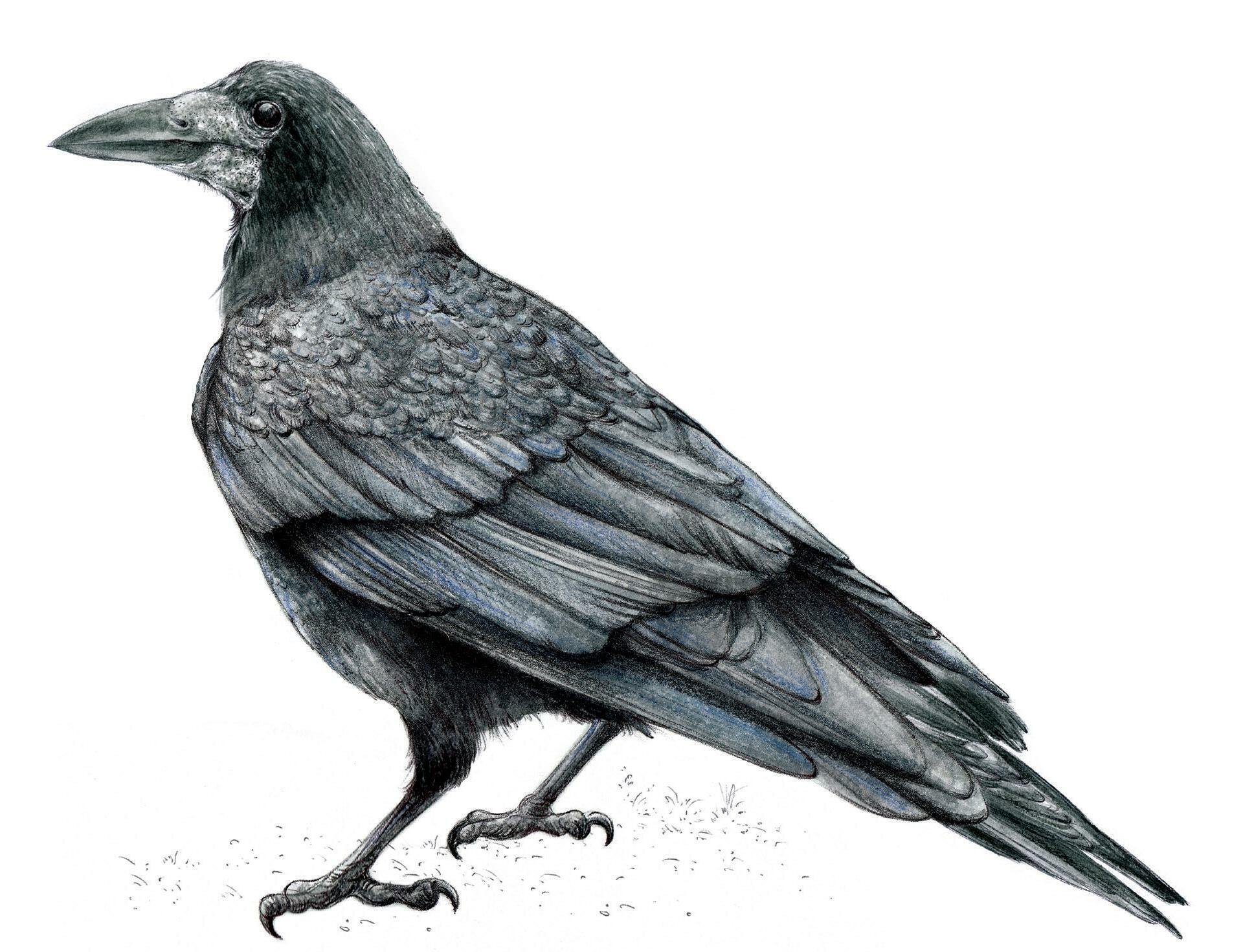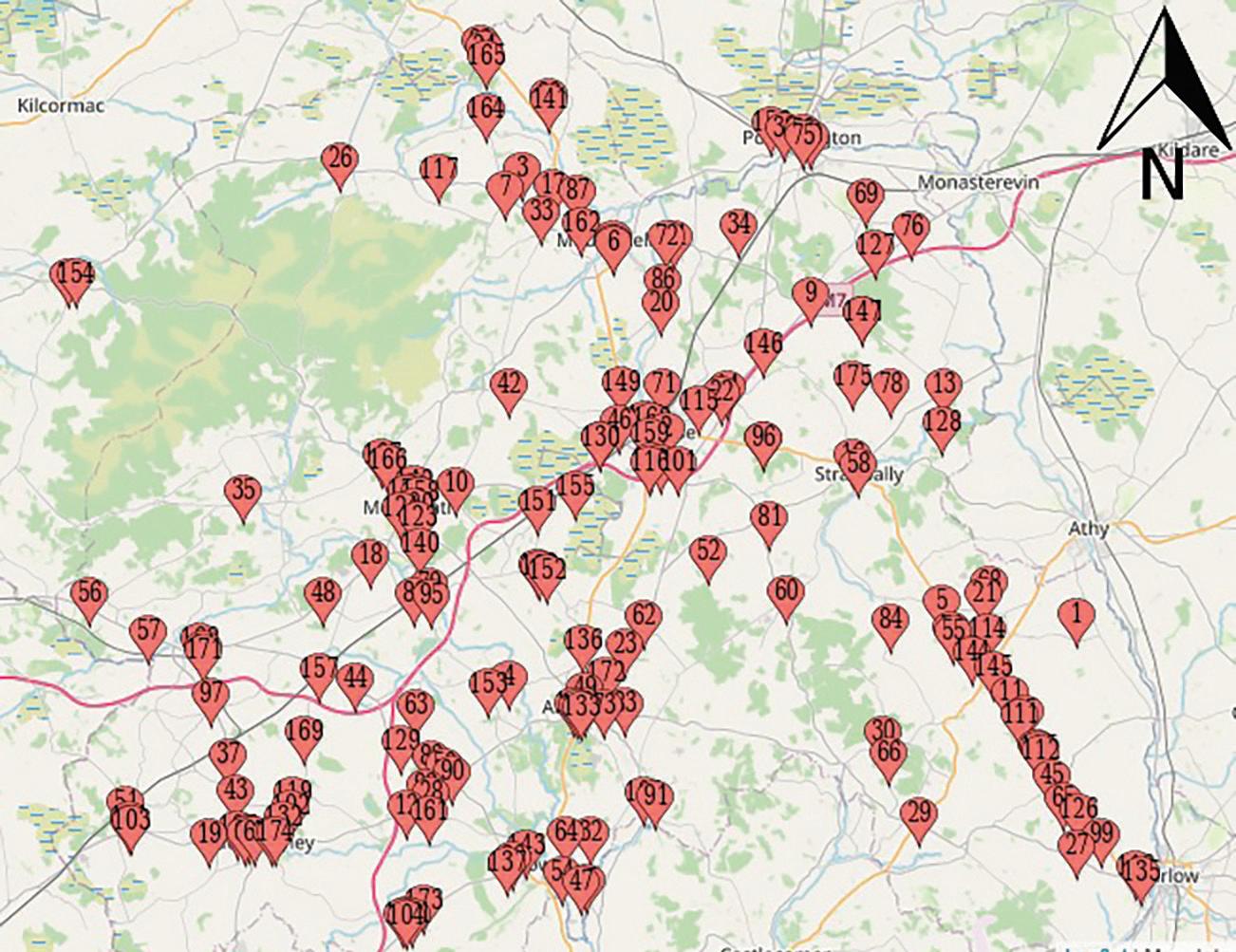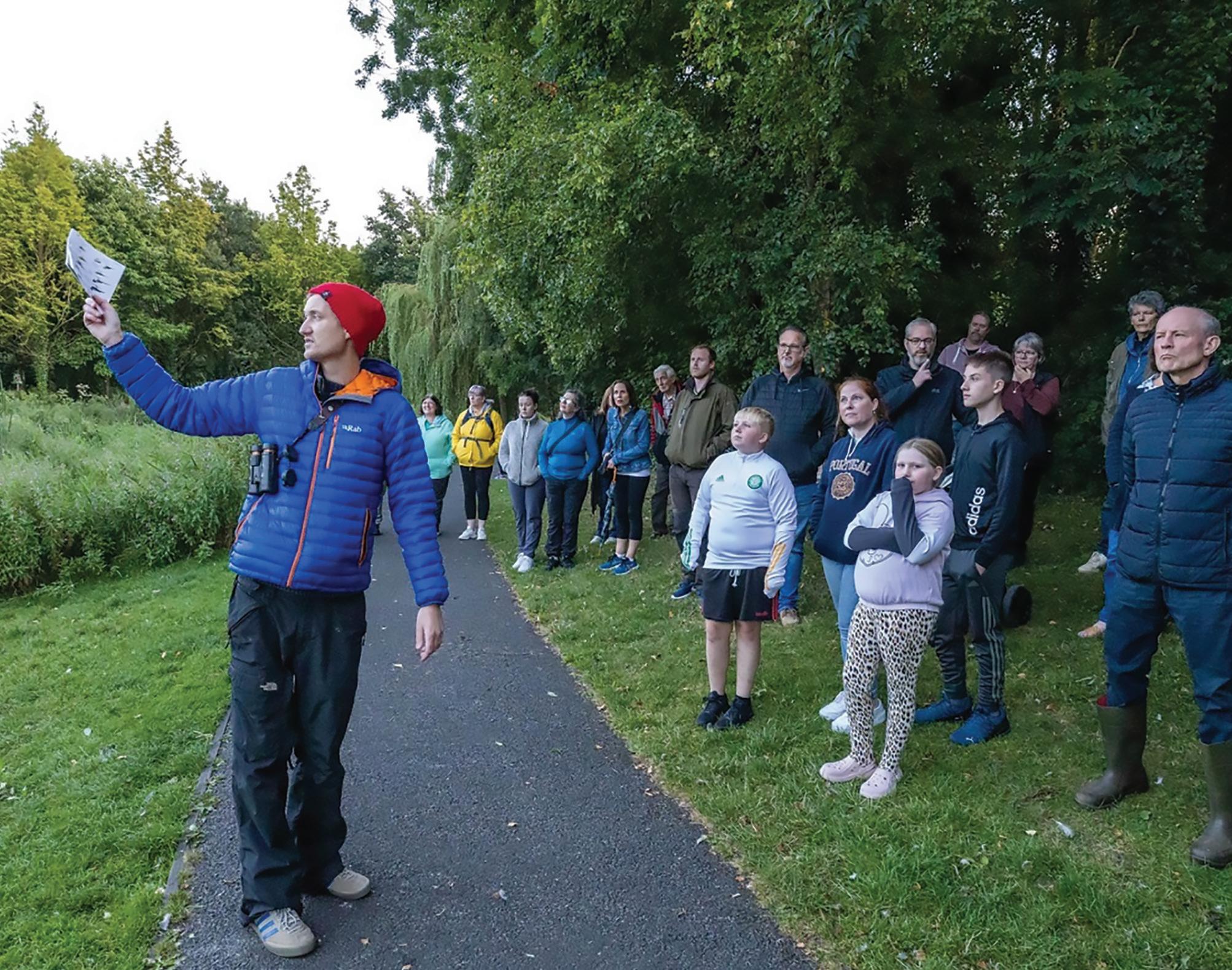
5 minute read
CITIZEN SCIENCE
Ode to
NATURAL HISTORY OF ONE OF OUR MOST COMMON BIRDS
the Rook
BY RICKY WHELAN
The rook is among seven species in the Corvid (or crow) family that are native to Ireland. The Corvid family is made up of what we might consider the true crows (genus Corvus) as well as the magpies, jays and nutcrackers. In no particular order that list of seven “crow” species includes: jackdaw, chough, rook, hooded crow, raven, jay and magpie. Remarkably the corvids are considered passerines (songbirds), but they are unlikely to win any plaudits for their raucous songs and calls. The rook is by far the most common, numerous and widespread of them all with recent population estimates in Ireland of 3.5 million individuals.
The scientific name for rook is Corvus frugilegus, the “Corvus” bit meaning crow and the “frugilegus” meaning “fruit-gathering”alluding to their foraging preferences for vegetative material which may surprise those amongst us who think they live off scraps from bins alone!
The rook is a large crow, robust, with handsome black inky plumage, grey legs and feet, and a large grey bill with a bare patch at the base. They are highly social, almost always in groups, sometimes in small family groups or more often in their hundreds grazing in newly cropped fields or perched in long rows along electricity lines. Young rooks have a black bill and lack that bare patch at the base, which comes after a year or two and is typical of adult birds. This bare patch acts to allow rooks to drive their powerful bill further into the soil to find invertebrate prey such as “leather jackets”, the larva of craneflies (daddy long-legs).
Rooks, like other crows, are highly gregarious, nesting in colonies known as rookeries and coalescing into large flocks in the autumn and winter, spending the night at communal roost sites in trees that can be thousands of birds strong. Rookeries are large communities of nests and adult pairs living and rearing broods close to neighbors, but they do protect a small territory of mere inches around the nest and the male of the pair will stand guard on a perch beside the nest when he’s not out foraging
on behalf of himself and his mate. Rooks, and indeed all crows, are single brooded so once the nest of young has fledged the family will move to join other family groups from their rookery and as breeding season comes to a close, and the autumn arrives, these flocks grow larger. These flocks afford protection, provide heat at roost, where pair bonds are formed and information is shared. Winter roosts form in stands of trees and can exist at the same site for many decades. Social status is exerted at roosting time and rook societal rules are followed. When the birds arrive back as darkness approaches, they will begin to settle on the limbs of the trees, the young subordinate birds on the lower branches, older birds further up and the dominant pairs at the top. This stratification is very much by design, as information flows upwards with the alpha birds filtering the best tips on food sources/locations etc., whilst their waste flows downwards, it’s clear to see why the top branches are the desired perches. In a cruel twist for young birds at these roosts, during adverse weather the dominant birds will "THE ROOK IS A take the lower branches and allow the LARGE CROW, ROBUST, WITH HANDSOME subordinates to act as feathered umbrellas! It really is advantageous to have status among crows. The rook doesn’t often get the BLACK INKY appreciation it deserves but in Laois the PLUMAGE, GREY Irish Wildlife Trust, BirdWatch Ireland LEGS AND FEET, and the local authority have been on a AND A LARGE GREY BILL WITH A BARE PATCH bit of a campaign to boost local knowledge and appreciation for these humble creatures. In early spring this year (2022) the Laois Rookery Survey AT THE BASE" was initiated through a simple social media campaign. A citizen-science project, supported by the National Parks and Wildlife Service Small Recorders Grant, asked for folk to submit the location, approximate number of nests, and tree type (if known) of their local rookeries. And the response was massive! In just a couple of weeks, 173 unique rookeries were identified numbering from 5 to >250 nests each distributed widely across the county. The largest rookery containing 253 Apparently Occupied Nests (AONs) occurring in Portlaoise town center. The study showed the importance of urban Photo by Aga Grandowicz



Ricky Whelan talks rooks at the Bats About Rooks event in Portlaoise.
Photo by Alf Harvey Laois Rookery Map
areas for nesting rooks as well as their preference for open pastures with no rookeries being identified in the upland and forested areas of the Slieve Bloom Mountains, for example. Plans are afoot to now try to identify the important winter roost sites within the county which grow to "AS PART OF THAT their largest between November and PROJECT, WE WILL February. BE HIGHLIGHTING With the energy and THE ROOKERY AND enthusiasm of the THE CHARISMA OF THE BIRDS ON SITE THROUGH WILDLIFE rookery survey behind us we decided to run a rook and batthemed event for National Heritage Week during August. INTERPRETATION Irish Wildlife Trust LaoisAND THROUGH THE Offaly Branch, Kildare Bat ONSITE MUSEUM" Group and BirdWatch Ireland together with the Laois Heritage Office hosted the “Bats About Rooks” event in Portlaoise’s Peoples Park. Attendees were treated to the whole nightly drama of the rooks as they arrived to roost and sorted out the pecking order. With the rooks settled, the bats came into their own and Kildare Bat Group gave a wonderful tour of the bats and habitats within the park. As luck would have it, we managed to win the Biodiversity Award at the recent National Heritage Week Awards for that event!
Finally, after a long break from in-person and practical events and projects during the pandemic, the IWT Laois-Offaly Branch are again working with Laois Heritage Office and the community in Timahoe to improve and promote the rich natural history of Timahoe Monastic Site in the middle of this picturesque village. As part of that project, we will be highlighting the rookery and the charisma of the birds on site through wildlife interpretation and through the onsite museum. This work included commissioning wildlife illustrations by Aga Grandowicz (agagrandowicz.com).









